In 2014, three established family-owned crew boat companies formed a joint venture: SeaTran Marine LLC. The relationship began with a two-boat fast supply vessel (FSV) order, with options for two more, from the Gulf Craft shipyard in Franklin, La.
The first boat, named for Capt. Elliott Cundieff, chief executive of Texas Crewboats LLC, was delivered last November. Capt. Elliott, a 205-foot, 10,800-hp speedster, performed beyond expectations and impressed all aboard with Gulf Craft’s high level of fit and finish displayed throughout the vessel.
“It’s the newest, highest-tech boat out here,” said Capt. Dean Ripley. “It has a great DP system, and the Hamilton jets are the best jet system for control on these boats and work extremely well with the DP system. The jets are very efficient on DP because you are not continually grinding gears shifting back and forth between forward and reverse.”
The DP-2 boat is loaded with equipment far beyond its state-of-the-art electronics package, some of it necessary to qualify the boat for standby-vessel status. A partial list includes 3G/4G broadband, FLIR M-625L night vision system, line-throwing gun, fixed boarding ramps, dispersant spray system and FiFi-1 firefighting system with monitors located on the stern.
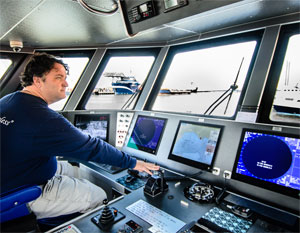 |
|
Capt. Dean Ripley is at the controls as the 205-foot eases into Port Fourchon. |
Along with Texas Crewboats, the other two companies in the joint venture are Iberia Marine Service LLC and Comar Marine LLC. The chief executive of SeaTran and president of Iberia Marine, Blake Miguez, and his colleagues Glynn Haines of Comar Marine and Capt. Elliott Cundieff of Texas Crewboats, decided that Gulf Craft would build the best boat. “We specialize in crew boats and these are loaded up like a Mercedes,” Miguez said.
The power train on Capt. Elliott consists of four Tier 3 Cummins QSK60 2,700-hp mains, Twin Disc MGX61500 reduction gears at 2.56:1 and Hamilton Jet HT810 water jets. There are three Cummins QSM11 290kW gensets and Thrustmaster electric bow thrusters.
Capt. Elliott has a cargo deck area of 3,672 square feet and carries 40,200 gallons of drill water. The boat’s 34-foot beam is a little wider than most FSVs. Miguez explained that the extra few feet increases the cargo-carrying ability of the vessel. The passenger lounge accommodates 67 people in reclining seats and includes two 50-inch flat-screen TVs.
The second boat, Mr. Steven, is named for Steve Miguez, chief executive of Iberia Marine and Blake’s father. The SeaTran fleet numbers 27 vessels ranging from 135 feet to the 205-foot Capt. Elliott. “We’ve got the bases covered pretty well,” said Blake Miguez. “We can perform shelf and day work and also deepwater.”
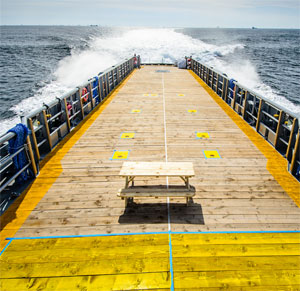 |
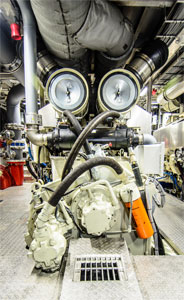 |
|
|
Capt. Elliott’s aft cargo deck contains 3,672 square feet of work space, aided by a wider beam than usual. |
One of the FSV’s four Cummins QSK60 main engines. Each engine generates 2,700 hp, for a total of 10,800 hp. |
|
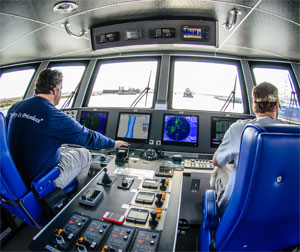 |
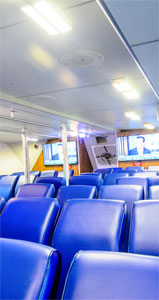 |
|
|
Ripley and fellow Capt. Justin DePrume are at the helm as the boat eases safely past vessels and port infrastructure. |
The passenger lounge, which accommodates 67 people, offers reclining seats, a pair of 50-inch flat-screen televisions and a DVD player. |
|
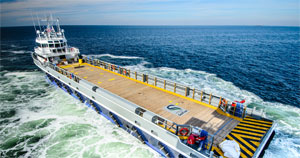 |
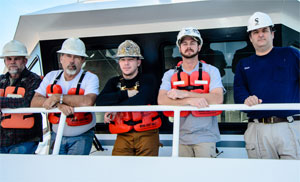 |
|
|
A rear view of the aft cargo deck and stern of Capt. Elliott, built at Gulf Craft in Louisiana. |
Ripley, at far right, meets his crew, with work vests donned, outside the wheelhouse; from left, Capt. Rich Negethon, deck hand Dwayne Fatherree, deck hand Francis Landry and DePrume. |

